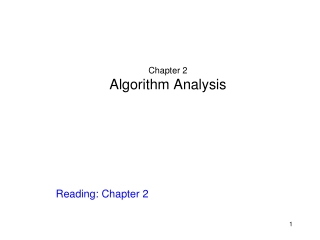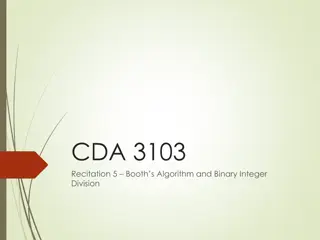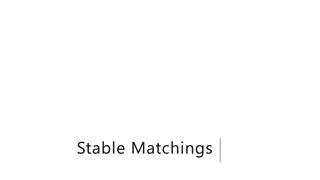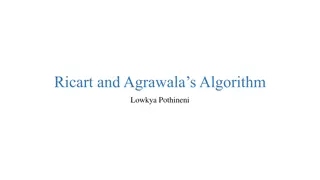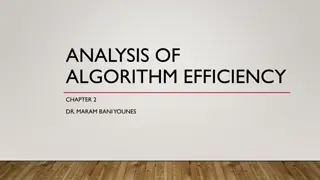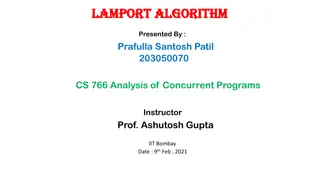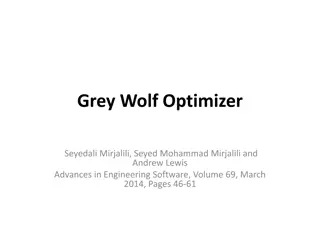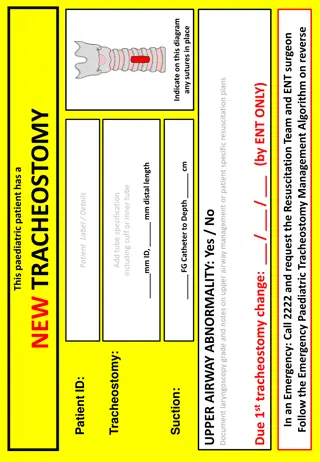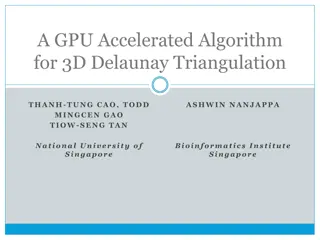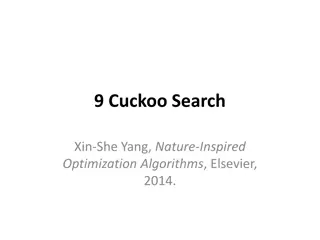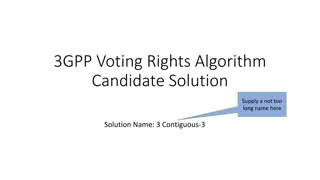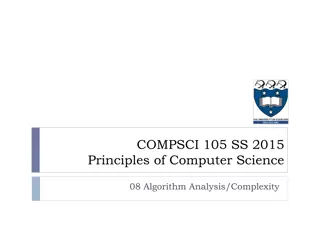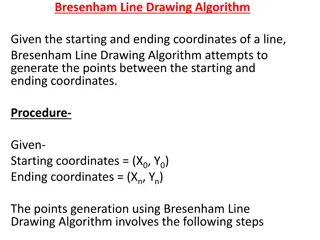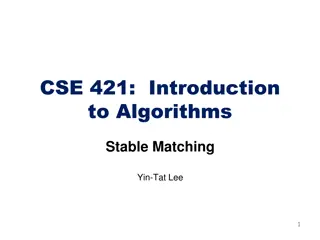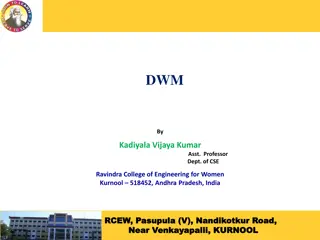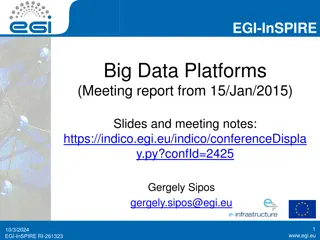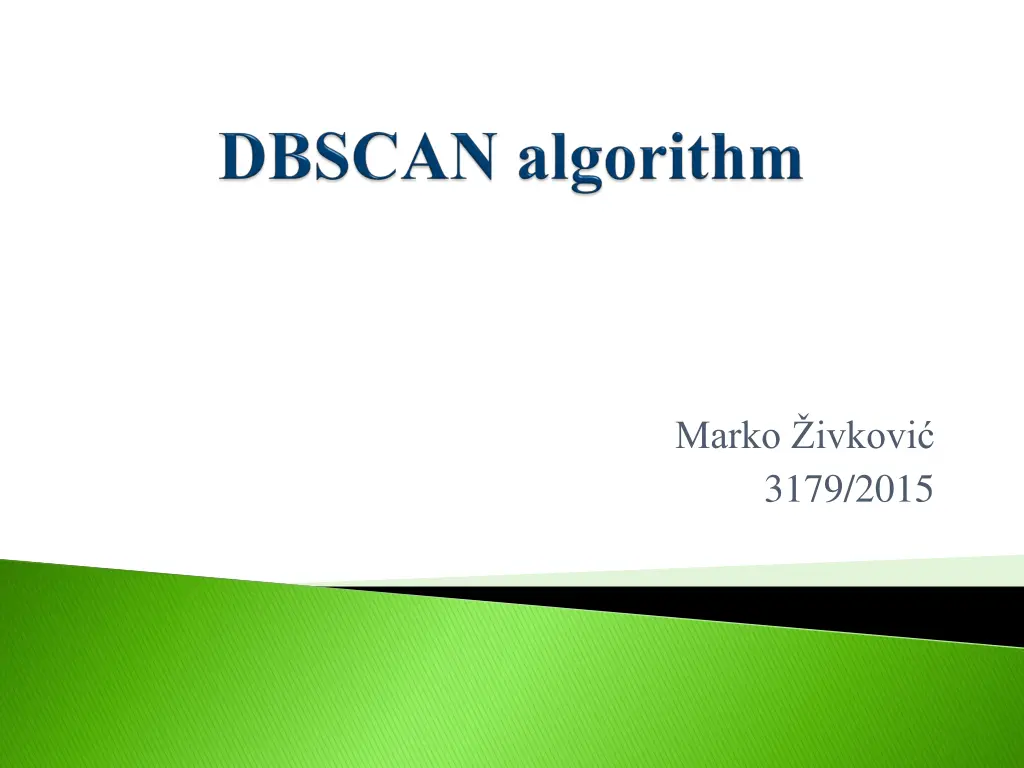
Understanding DBSCAN Clustering Algorithm
Learn about Density-Based Spatial Clustering of Applications with Noise (DBSCAN) algorithm, a method for grouping data points based on their density. Discover the core concepts such as clustering, core points, density connectivity, advantages, and disadvantages of DBSCAN clustering.
Download Presentation

Please find below an Image/Link to download the presentation.
The content on the website is provided AS IS for your information and personal use only. It may not be sold, licensed, or shared on other websites without obtaining consent from the author. If you encounter any issues during the download, it is possible that the publisher has removed the file from their server.
You are allowed to download the files provided on this website for personal or commercial use, subject to the condition that they are used lawfully. All files are the property of their respective owners.
The content on the website is provided AS IS for your information and personal use only. It may not be sold, licensed, or shared on other websites without obtaining consent from the author.
E N D
Presentation Transcript
Marko ivkovi 3179/2015
Clustering is the process of grouping large data sets according to their similarity Density-based clustering: groups together points that are closely packed together marks as outliers points that lie alone in low-density regions DBSCAN obtains the density associated with a point by counting the number of points in a region of specified radius around the point Input parameters: Radius value epsilon Minimum points required to form cluster (minPts) 2/12
Core point - At least minPts points are within distance of it Directly density-reachable Point p is directly density-reachable from point q if p is within the Eps-neighborhood of q, and q is a core point. Density-reachable Point p is density-reachable from point q if there is a chain of points p1,. . .,pn, such that p1 = q and pn = p and pi+1 is directly density-reachable from pi 3/12
Density-connected Point p is density-connected to point q if there is point o such that both p and q are density-reachable from o Border Point Point p is a Border point if it is not a Core point but density-reachable from another Core Point Noise Points not reachable from any other point 4/12
Advantages Does not require the number of clusters in the data a priori Can find arbitrarily shaped clusters Robust to Noise Mostly insensitive to the ordering of points in the database 6/12
Disadvantages Border points reachable from more than one cluster, can be part of either cluster (DBSCAN* - treats border points as noise) Choosing a meaningful distance threshold can be difficult Cannot cluster well data sets with large differences in densities (minPts- combination cannot be chosen appropriately for all clusters) 7/12
Satellites images Classifying areas of the satellite-taken images according to forest, water and mountains. X-ray crystallography Locates all atoms within a crystal, which results in a large amount of data. DBSCAN algorithm can be used to find and classify the atoms in the data. Anomaly Detection in Temperature Data Relevant due to the environmental changes (global warming) It can also discover equipment errors and so These unusual patterns need to be detected and examined 8/12
./dbscan numPts xmin xmax ymin ymax minPts eps ./dbscan 100 -10 20 -30 15 5 50 CPU implementation time: 0.179264[ms] GPU implementation time: 1.608224[ms] ./dbscan 1000 -10 20 -30 15 5 10 CPU implementation time: 29.422592[ms] GPU implementation time: 21.141760[ms] ./dbscan 10000 -10 20 -30 15 5 3 CPU implementation time: 1329.740479[ms] GPU implementation time: 331.086670[ms] ./dbscan 100000 -10 20 -30 15 5 1.2 CPU implementation time: 132792.062500[ms] GPU implementation time: 19935.035156[ms] 11/12
DBSCAN, Backlund H., Hedblom A., Neijman N., Linkpings Universitet, 2011 1. ST-DBSCAN, Birant D., Kut A., Dokuz Eylul University, 2006 2. https://en.wikipedia.org/wiki/DBSCAN 3. https://en.wikipedia.org/wiki/Cluster_analysis#Density- based_clustering 4. http://codereview.stackexchange.com/questions/23966/density- based-clustering-of-image-keypoints 5. http://mups.etf.rs/vezbe/MPS%20-%20CUDA.pdf http://mups.etf.rs/lab/MPS%20-%20Lab4%20- %20CUDA.pdf 6. 7. 12/12

